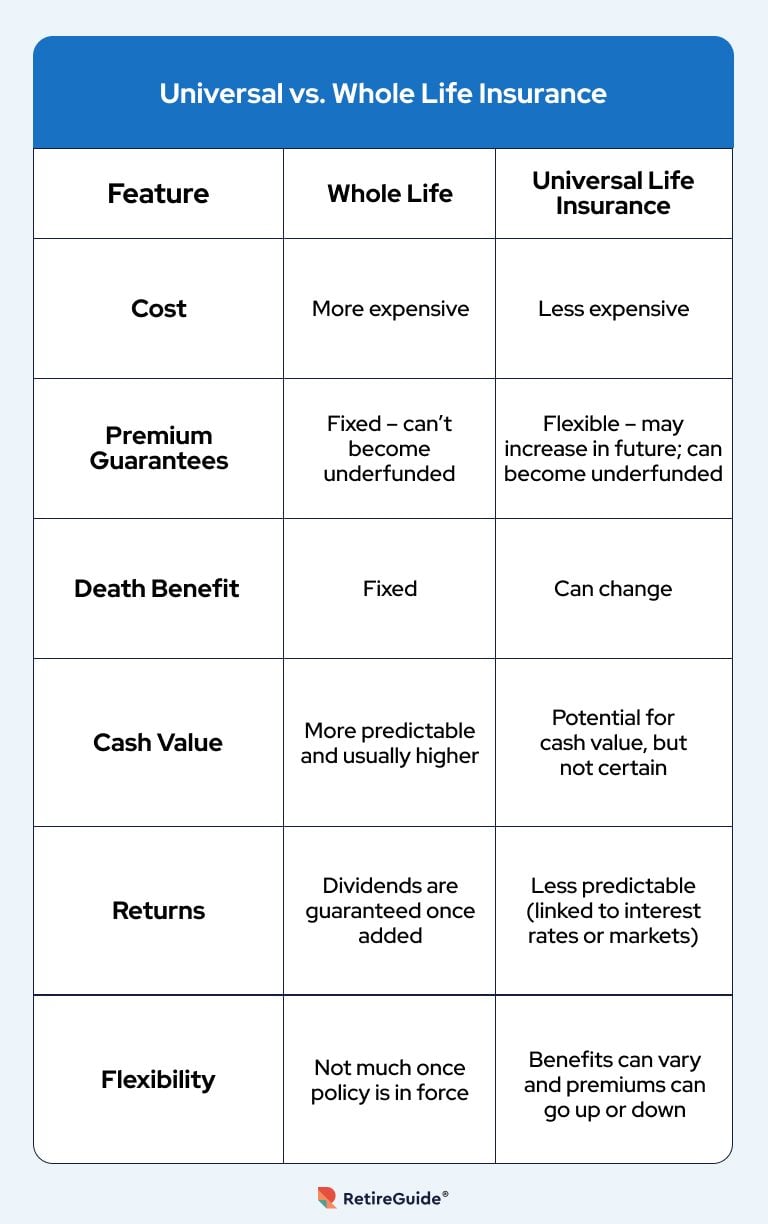Shop At Haya: Your Ultimate Shopping Guide
Discover the best shopping tips, trends, and deals for a smarter buying experience.
Whole Life Insurance: A Commitment That Lasts Beyond the Grave
Explore the power of whole life insurance—how it secures your legacy and supports your loved ones long after you're gone!
Understanding Whole Life Insurance: Benefits and Features Explained
Whole life insurance is a type of permanent life insurance that provides coverage for the insured's entire life, as long as premiums are paid. Unlike term life insurance, which expires after a set period, whole life insurance offers lifelong protection. One of the key benefits of whole life insurance is that it builds cash value over time, allowing policyholders to accumulate savings that can be borrowed against or withdrawn. This feature makes it not only a safety net for loved ones in the event of the policyholder’s death but also a financial asset that can contribute to long-term financial planning.
In addition to the cash value component, whole life insurance often comes with a fixed premium that remains constant throughout the policyholder's life. This means that even as the insured ages or if their health deteriorates, their premium will not increase. Moreover, whole life insurance policies typically offer dividends, which can be reinvested to purchase additional coverage, used to reduce premiums, or taken as cash. This combination of stability, cash accumulation, and potential dividends makes whole life insurance a valuable financial tool for those seeking to secure both their family's financial future and their personal wealth.

Whole Life Insurance vs. Term Life Insurance: Which is Right for You?
When considering whole life insurance versus term life insurance, it's essential to understand the key differences between these two types of policies. Whole life insurance provides coverage for the insured's entire lifetime, as long as premiums are paid. This type of policy also accumulates cash value over time, acting as a forced savings account that can be accessed or borrowed against. On the other hand, term life insurance offers coverage for a specified period, such as 10, 20, or 30 years, and is generally more affordable. Once the term ends, the policyholder must either renew the policy at a potentially higher rate or forfeit coverage altogether.
Choosing between these two options largely depends on your financial goals and personal circumstances. If you seek lifelong protection and are willing to invest a little more in your premiums, whole life insurance may be the better choice. Conversely, if you are primarily interested in ensuring financial stability for your family during a particular timeframe—like while children are growing or a mortgage is being paid off—then term life insurance could be more appropriate. Assessing your current needs and future financial obligations will help determine which type of policy aligns best with your goals.
How Whole Life Insurance Provides Financial Security for Your Loved Ones
Whole life insurance is a powerful financial tool that offers long-term security for your loved ones. By providing a guaranteed death benefit, it ensures that your family members will have the financial resources they need in the event of your passing. This peace of mind is invaluable as it allows you to focus on building memories with your family, knowing that they will be taken care of. Whole life insurance also accumulates cash value over time, which can serve as an additional asset for your family when needed.
Moreover, the premiums for whole life insurance remain level for the policyholder's lifetime, making it a predictable and stable financial commitment. Unlike term life insurance, which expires after a certain period, whole life insurance provides lifelong protection. This means that your loved ones will not only receive a death benefit, but they can also benefit from the cash value component if financial needs arise during your lifetime. Investing in whole life insurance is an essential step towards creating a secure financial future for those you care about most.